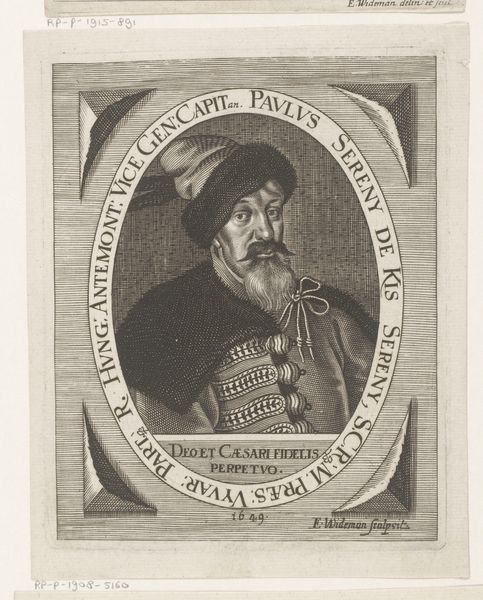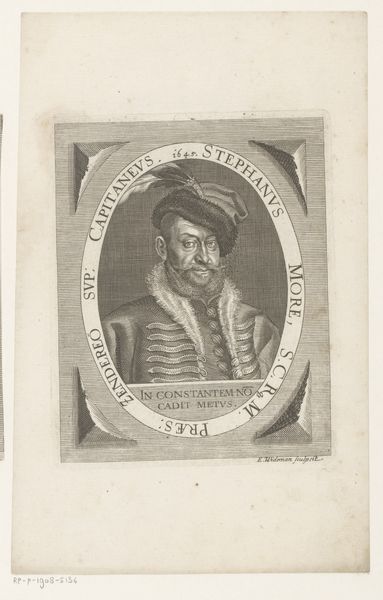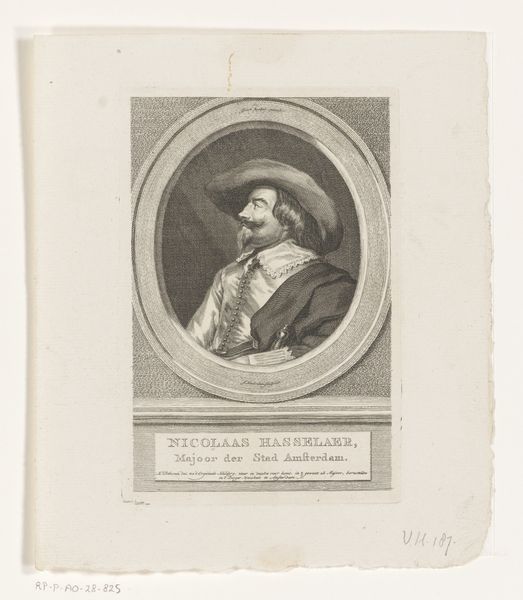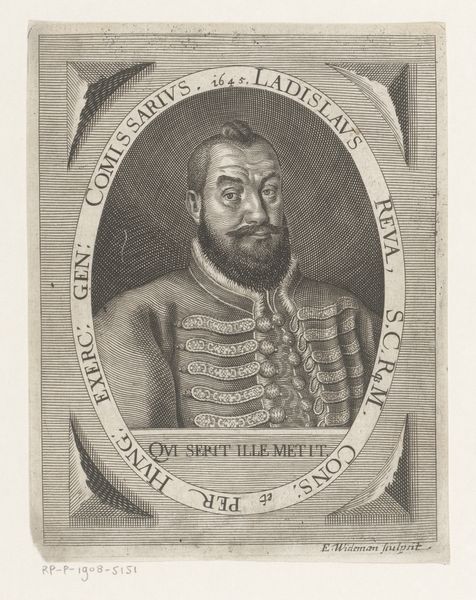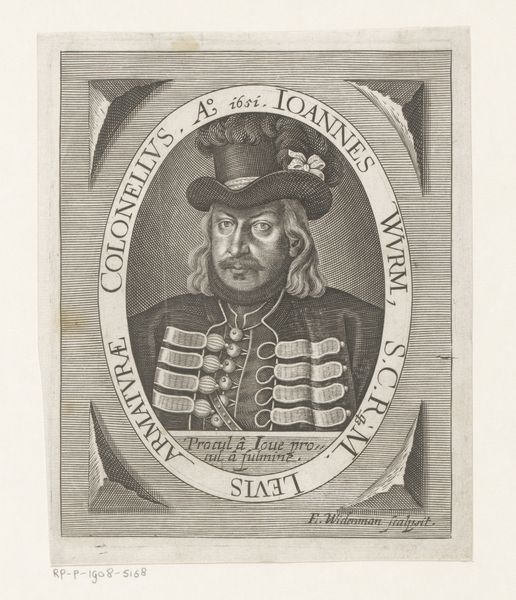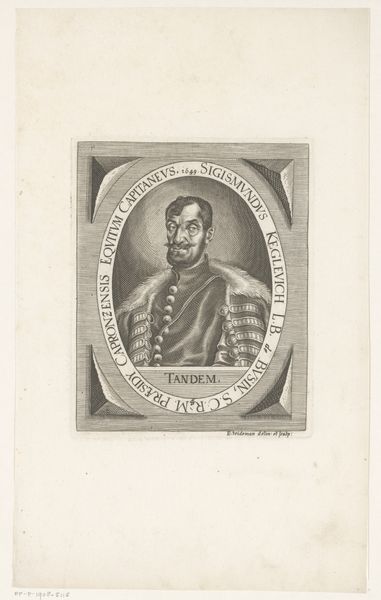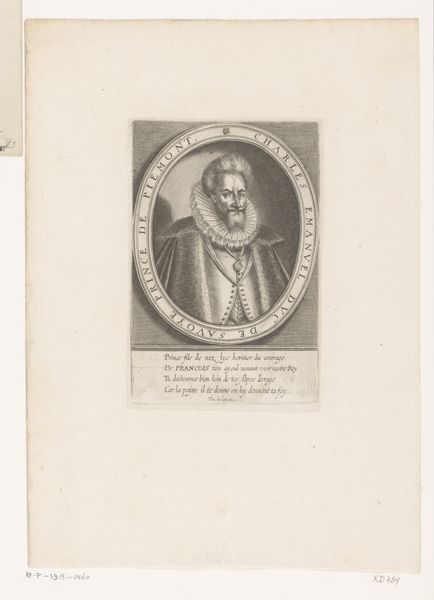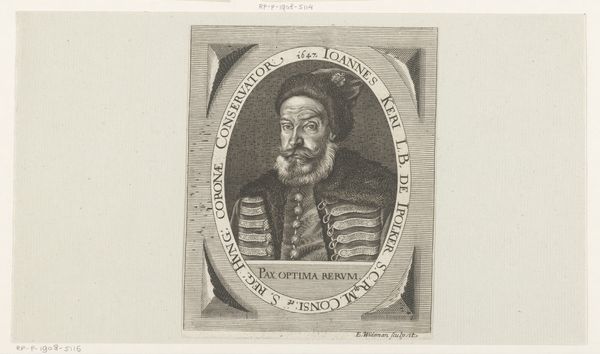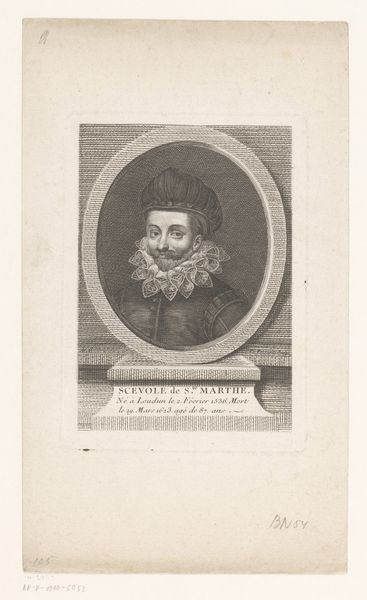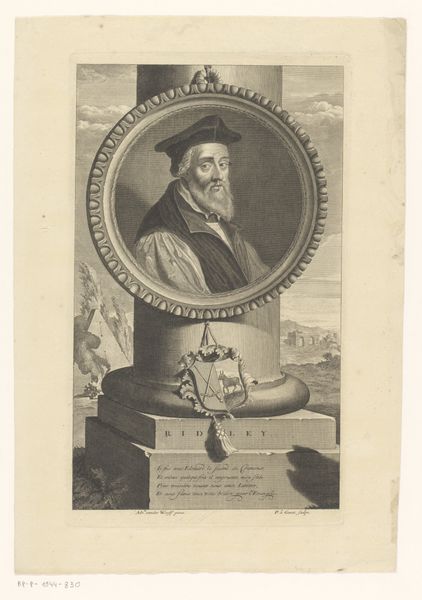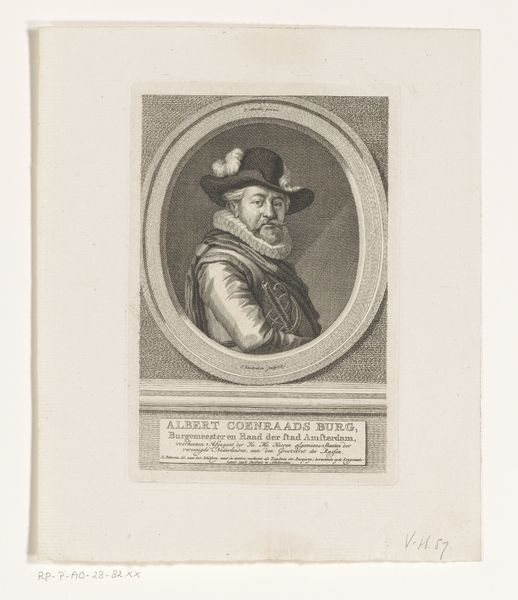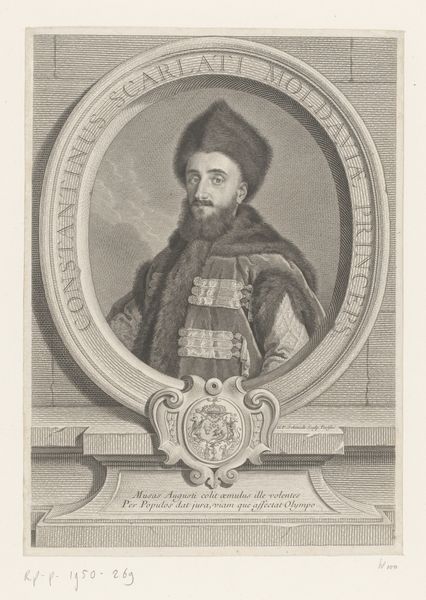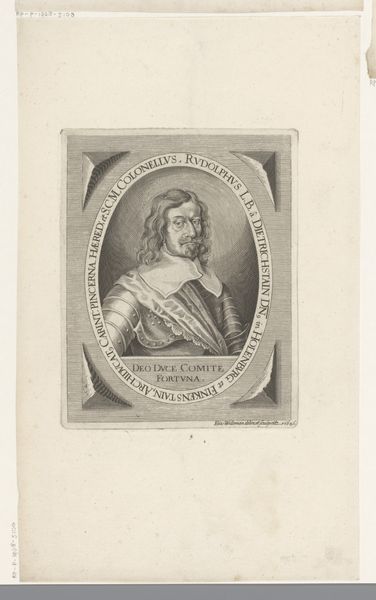
#
photo of handprinted image
#
aged paper
#
toned paper
#
light pencil work
#
photo restoration
#
old engraving style
#
historical photography
#
old-timey
#
19th century
#
colour shading
Dimensions: height 148 mm, width 119 mm
Copyright: Rijks Museum: Open Domain
Elias Widemann created this print of Mihály Majthényi in 1649 using engraving. Prints like these played a crucial role in shaping public perceptions and solidifying social hierarchies in 17th-century Europe. The inscription tells us that Mihály Majthényi was a royal assessor, indicating his position within the legal or administrative structure of his time, likely in Hungary. The Latin inscription, "Non omne quod licet, honestum est" translates to "Not everything that is permitted is honorable". This phrase suggests a society grappling with questions of morality and the limits of power. The portrait, with its formal pose and detailed rendering of clothing, presents Majthényi as a figure of authority and respectability. Historical records, genealogical databases, and studies of legal systems in 17th-century Hungary can provide further context. By examining these resources, we can gain a deeper understanding of how individuals like Majthényi navigated the social and political landscape of their time. Ultimately, this print serves as a reminder of the complex interplay between individual identity, institutional power, and the values of society.
Comments
No comments
Be the first to comment and join the conversation on the ultimate creative platform.
